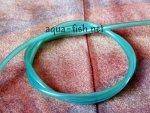What is an aquarium airline and examples of products
Introduction
A key component in a properly constructed aquarium which may seem totally insignificant but actually plays a vital part is the aquarium airline.
As aquarists take fish from rivers, lakes and oceans, and place them in an aquarium tank, part of the object is to create an environment for them that will allow the fish to thrive. It is very difficult to recreate the exact environment that the fish enjoyed when not in “captivity”. It is impossible to recreate the large, even unlimited, surface areas that the fish had to live in, but at least it should be possible to recreate most of the conditions that they enjoyed within a limited area. As we all know, fish need oxygen to be introduced into the water to survive, and they also exhale carbon dioxide which needs to be expelled from the water for the sake of the fish’s health. This means that proper circulation in the tank is highly important, and this needs to be done through the process of aeration. In addition the air that is injected into the tank has to be very evenly distributed and this can only be carried out by installing an air pump.
Through installing an air pump the correct balance of oxygen and carbon dioxide will be established in the tank and the fish should enjoy a happy and health life in the aquarium tank.
However installing a pump as a stand alone item is not enough. There are a whole set of accessories that should be installed together with the pump to provide a full set of back ups to make sure that the pump does the job it was designed to do.
There are certain accessories that are relatively expensive, where an aquarist on a tight budget might be inclined to cut corners and buy a cheap version. This is what is known as “false economy” as, if the fitting breaks not only will they face a serious flooding problem, but there is a fair chance that the fish in the tank, starved of oxygen, will meet a premature ending.
The first accessory that money should not be skimped on is the tubing that leads the air to and from the pump. There are too many instances where people who are establishing an aquarium for the first time and begin to panic as the setting up cost begin to mount up. All tubing looks the same so they are inclined to buy the least expensive tubing. This type of tubing is extremely vulnerable as it will not stand up to pressure in the long term and will burst. Spend an extra few dollars on strong clear piping made usually made from silicone. These pipes are built to withstand pressure and warm water temperatures and the chances of them letting you and the fish in your care down are one in a few hundred thousand.
Some of the example of airline costs can run as follows: following companies:
- Python Airline: offering a 25 feet long x 6mm diameter made from FDA approved, non-toxic, ozone safe material compounded with UV stabilizers that provide guaranteed flexibility and durability, costing $7.30 per unit, or 30 cents per foot.
- Algarde silicon tubing: offering a approximately 17 feet long x 6mm diameter made from silicon, costing $4.80 per unit or 28 cents per foot
- Algarde regular tubing: offering approximately 17 feet long x 6mm diameter, costing $3.20 per unit or 20 cents per foot
- Penn Plax regular tubing: offering approximately 25feet long x 6mm diameter, costing $2.00 per unit or 8 cents per foot
- Penn Plax silicon tubing: offering a approximately 8 feet long x 6mm diameter , costing $1.50 per unit or 18 cents per foot.
These are just a few of the examples of tubing that can be purchased online to serve you aquarium pumping systems.
Another important item that is relatively inexpensive yet can save a lot of aggravation for the aquarist and may well prevent a disaster from occurring is a simple non return valve. If for any reason the pump switches of, then this little valve will prevent the water flowing backwards from the aquarium and onto its surrounding areas. A situation that is extremely especially for the fish as well as the surrounding areas. A simple anti-backflush device will prevent this from happening.
Water flowing through the air lines need to be controlled against a ratio of water temperature to oxygen levels. These are calculated on ascending scale where the water temperature is 15 ºC then the highest level of oxygen in the water should be no more than 10.1 milligrams to the litre. The highest scale is 28 °C should contain no more than 7.8 milligrams of oxygen to the litre with an average of 22 °C containing 8.9 milligrams of oxygen to the litre. These may seem like minor points, but they are important to the efficient management and function of the cooling system in the tank, and why only the best aquarium airlines should be installed.

